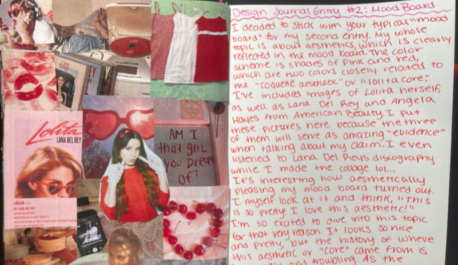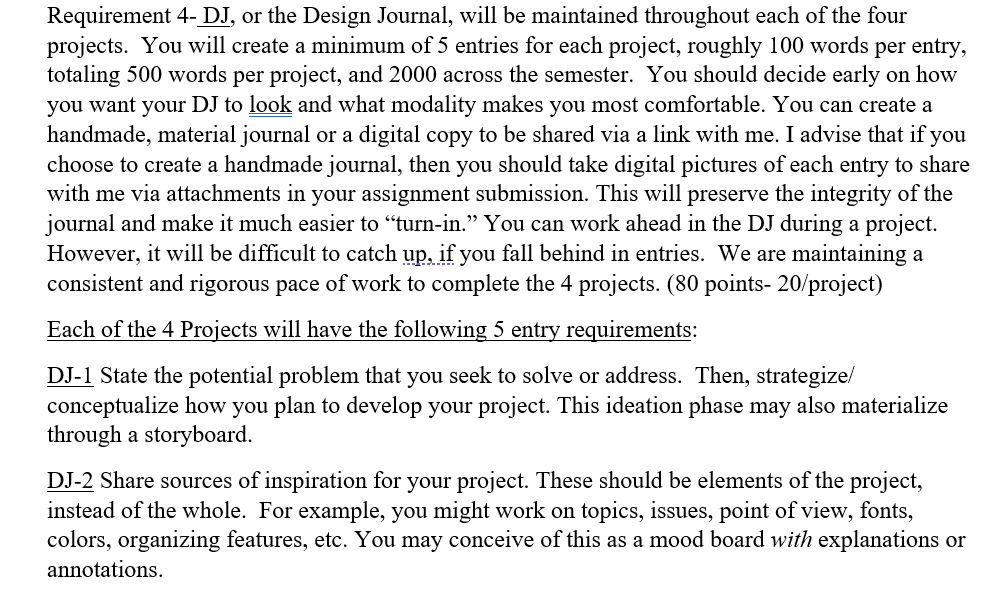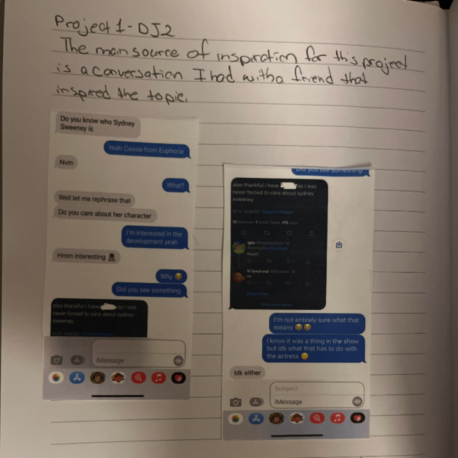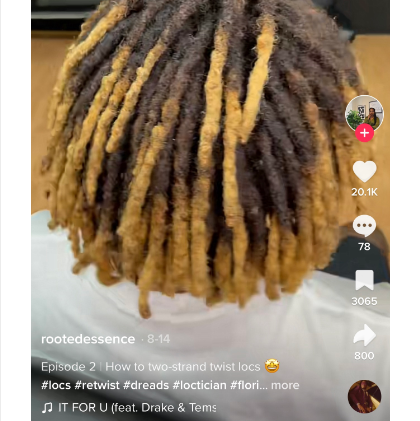
design journal 2 (dj-2)
ideate
Project 1– “Making a Thing” asked students to identify a problem or issue of their choosing, not assigned by the instructor. Then, they were to develop an original artifact that attended to the problem or issue address fellow peers in our classroom.
Taking the next steps to determine how to engage the content of Project 1 was the purpose of the 2nd design journal. Ideating or visualizing how elements of the project could materialize was one approach, although this could potentially cause some overlap with the 1st design journal.
Excerpted from class recording
Project 2– “Pulling a Thing Apart” asked students to break an existing artifact down to a set of features or components for rhetorical analysis. The subject matter could depart from the content of Project 1.
The 2nd design journal intended for students to locate related analysis-based artifacts where the same content was the focus for another writer/producer. What kind of impact did this artifact have on its audience and why? Not only could they write through elements possible for their own rhetorical analysis, but they could ruminate on the mechanics of analyzing purpose, perspective, and rhetorical choices.
Project 3– “Discussing Things” asked students to resituate the kind of work they had done previously in Projects 1 and 2 by creating a new artifact that performed an argumentative function in a public space. Students were expected to employ some of the rhetorical strategies analyzed in Project 2 by other producers.
As students shifted from analysis to argumentation, they had to become aware of the shape of argumentation. Design Journal 2 prompted students to map ways that they would argue for and against a position. Another way they could work through the journal entry was to find everyday examples of how various groups make the same arguments in advertisements, political demonstrations, music, art, etc.
Project 4– “Putting a Thing Back Together, Better” asked students to return to their work in Project 1 equipped with a fresh set of knowledge, tools, and inspiration. They had to redesign their Project 1 by choosing a new modality and new target audience for the redesigned artifact.
The project concept for the redesign was determined in the 1st design journal, so here in the 2nd entry students had the space to think through how individual elements could be reimagined. Students could draw from outside sources to inspire their new approach to the content. The 2nd Design Journal also gave students space to work through ways to pivot from handling material in one modality to another.




